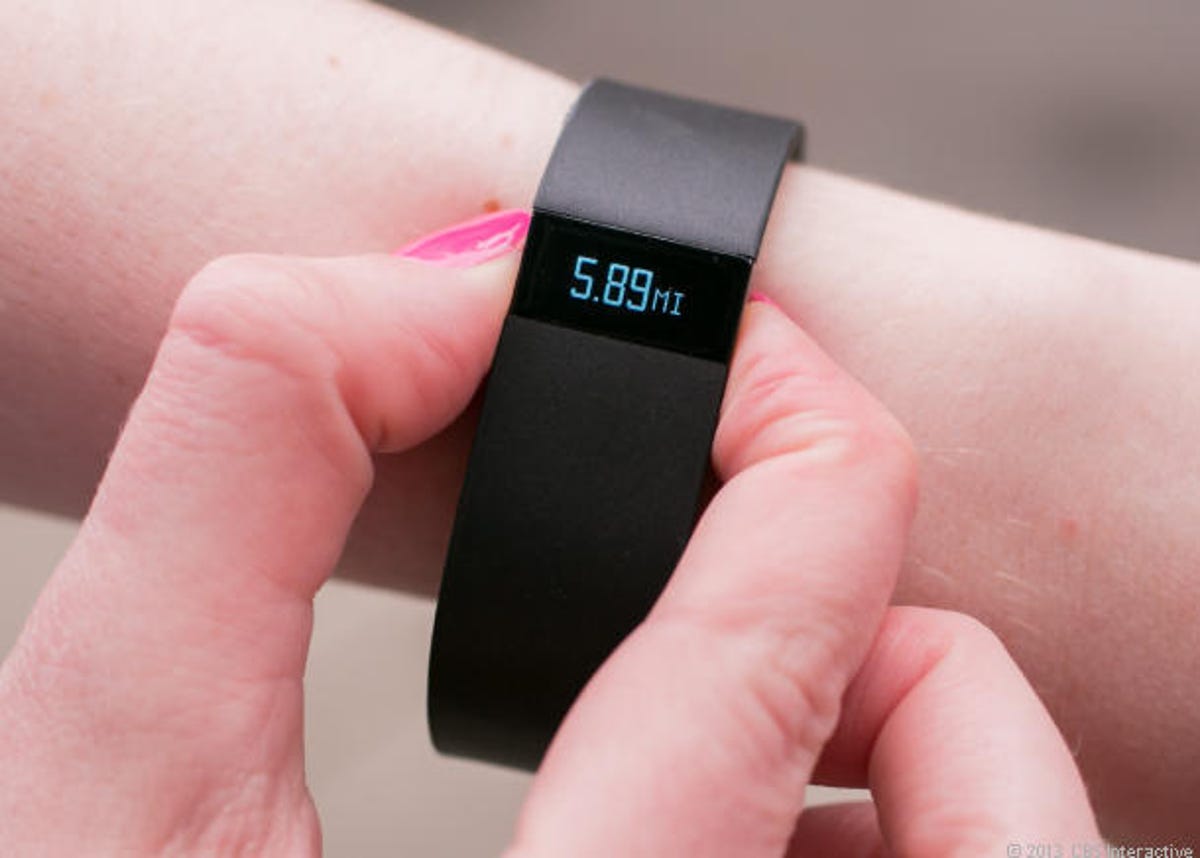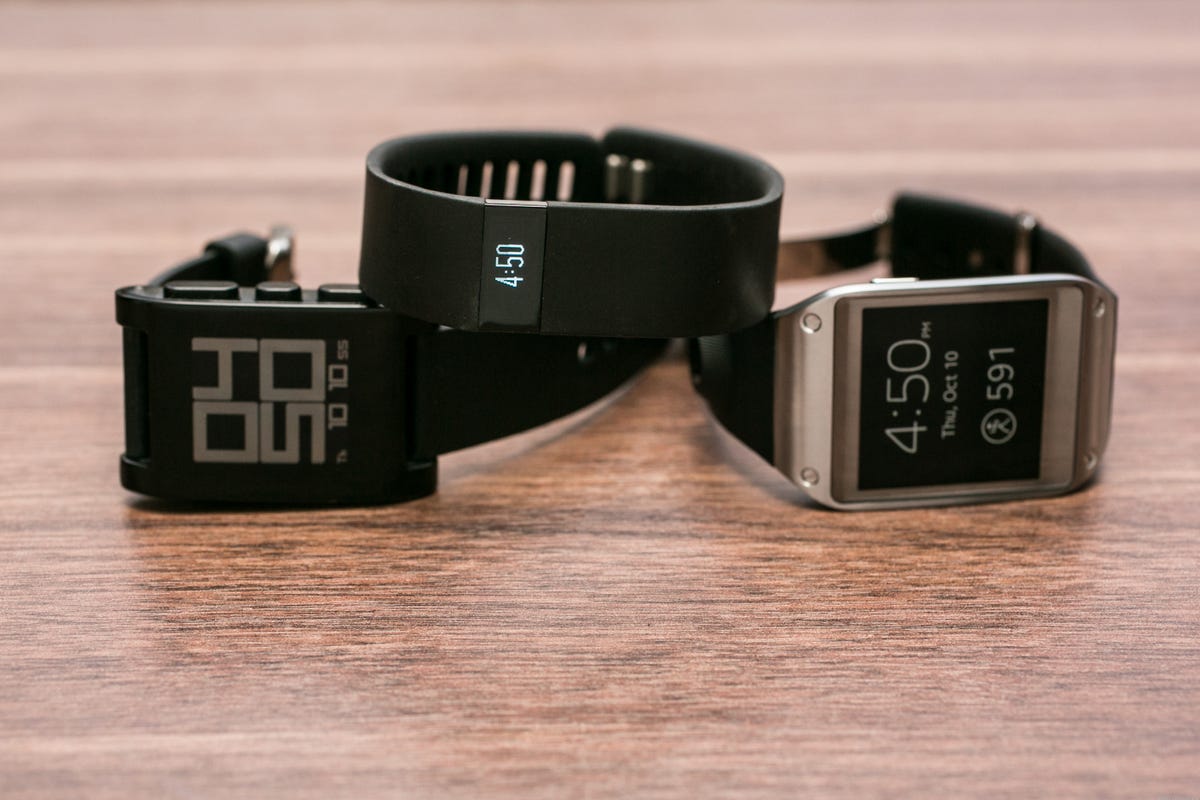I was going to write a story on two watches: the Samsung Galaxy Gear, and the Pebble watch. They represent opposite ends of the wearable spectrum: Big Tech, and indie power. Each is making a bid for your wrist, but in a very different way: budget vs. high-end, locked down to several devices vs. open to iOS and Android.
Then, along came the Fitbit Force.
I don’t want to make too much of it, but the Force is a smartwatch, too, and perhaps the most disruptive kind. It also brings something new to the table that both bigger companies like Samsung and smaller ones like Pebble need to pay attention to: while it doesn’t bill itself as a “smartwatch” — it’s first and foremost a “fitness tracker” — it’s just smart enough and just enough of a watch. And for some people — perhaps many people — that may be enough.
What’s the future of wearable tech? Well, listen to a story about three products: an independent smartwatch that tried to do everything, a major-manufacturer smartwatch that tried to do even more, and a little fitness tracking-watch that might be the key to where these devices need to go next.


Sarah Tew/CNET
The Pebble: Not enough
Smartwatches have been around over the last ten years — Microsoft SPOT watches, Fossil’s Palm watch, and more — but it took an indie company launching a Kickstarter campaign to bring back some attention to the territory. The Pebble watch is simple, has a black-and-white display, and costs $150. It connects to a ton of devices, and yes, it can download and store apps. But what types of apps those are, and how useful they can be, is still a big question mark.
The Pebble aimed to do what an iPod Nano on a wrist couldn’t: connect to your phone and get notifications, texts, and tell you who’s calling. As a pager on your wrist, it’s great. But the independent spirit of the Pebble, and its low-to-the-ground design, means it doesn’t do as much as you’d hope. Apps are left to the whims of independent folks uploading to message boards and third-party app-hubs: there are tons of ugly (and a few awesome) watch-faces, some weird quasi-playable games, and a couple of legitimately helpful apps.
But, the Pebble lacks its own built-in set of killer features. It has no pedometer, or music player, or even a stopwatch, unless you download one (and it can’t run in the background). A few apps like Runkeeper use the Pebble as a second screen, but it’s not a true stand-alone device, except if you use it as a watch.
And yet, as a watch, it’s extremely wearable, and even fun. Its battery life lasts nearly a week, and it’s water-resistant: you can wear it in the shower. It’s just that — unless you’re using it as a wrist-worn pager — it’s just not all that smart.


Andrew Hoyle/CNET
The Gear: Too much
Samsung decided to make a big splash as a major electronics manufacturer and create a smartwatch to show off to the world. The Samsung Galaxy Gear is a bit like Google Glass, in that it looks like The Future more than other devices. Samsung’s commercials know that. The product looks smooth, polished, high-end. And it’s high-end: at $300, it costs as much as the only phone that pairs with it, the Samsung Galaxy Note 3.
If you want a watch that’s stuffed with features, look no further: voice recognition; a big, bright color touchscreen; a camera built right into the wristband; and a speakerphone in the buckle. It controls music, receives messages, and can potentially work with hundreds of apps. But right now, few of those apps exist. Messages don’t always display on the Gear’s screen. And the camera function’s just weird.
Just like Samsung’s ads promised, this is Inspector Gadget on your wrist … but it’s not exactly useful. It’s flashy and intriguing, but limited. And it’s clearly a living prototype: by the time Gear works with more phones, you can imagine a Gear 2 on the cusp of release.
The Gear works, to some degree, as a stand-alone, disconnected device, but only to take pictures, record voice memos, track steps, and tell the time. It’s meant to be an accessory, and specifically a Samsung product accessory. Samsung’s fingerprints are all over this product: great if you’re a hardcore Samsung user, maybe, but not useful as a universal watch.
It’s too much for most people, and yet, it doesn’t do the basic things well enough.


Sarah Tew/CNET
Fitbit Force: Just right?
Fitbit’s latest wearable fitness tracker, the Fitbit Force, is a wristband with its own OLED display. You can get the time, or see how many steps you’ve walked, or how many stairs you’ve climbed. Other wrist-worn trackers like the Nike Fuelband do this, too.
But the Fitbit Force does one small and important other thing: for iPhone 4S and later users on iOS 7, it gets call notifications, too. Much like the Pebble, Gear and other smartwatches, it will show who’s calling when you’re wearing it once call notifications are active.
What this makes the Fitbit Force is, basically, a semi-smart watch.
The caller-notification part of the Fitbit Force isn’t live yet, but this is the most intriguing part of the whole equation: this is where an object like an activity tracker can start becoming a little bit like a smartwatch. I bet the Fitbit Force won’t be the last gadget to do this; in fact, as mobile operating systems become better at handling Bluetooth low energy connected devices, I’d expect a lot of everyday objects will get just a bit smarter.
A “little bit smarter” just might be right path. If you can track fitness, tell the time, and also see who’s calling (and hopefully, eventually, also get texts and other notifications), that covers most of the bases of what a lot of people are looking for. Make an attractive, do-just-enough watch, and that could be enough.


Sarah Tew/CNET
The moral of the story: Fewer ‘smartwatches,’ more ‘smart-enough watches’
Should Pebble and the Galaxy Gear be scared? No, not necessarily. But semi-smart watches are bound to be where everything’s going next. Why not have a Swatch that can also act as a wrist-pager, or a Nixon watch that glows green when you get a message from someone you care about, or a Casio watch that pulses when you’ve hit your fitness goal?
If we’re talking pure features, then smartwatches are bound to stick around. Between the inevitable Pebble 2, Gear 2, Apple’s future watch and the evolution of Google Glass, wearables are going to figure out the app landscape.
I’ve had my own wish list for what smartwatches need, but perhaps that list is best left for future products that figure everything out better.
For now, if you want functions, maybe a slightly smarter watch is the way to go. And I bet a lot of people will pick that path over a super-powered smartwatch, especially if the price is right.
The Fitbit Force is the wrist tech I’ve enjoyed wearing the most over the last week, and I’m not alone. It should tell hopeful watchmakers something: before dreaming up future tech, make sure your watch is functional, too.
Maybe the slightly-smarter watch is the Goldilocks product the category needs. Not overdesigned, and not underfeatured; the one that’s just right.



